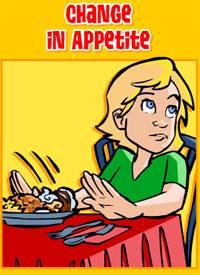What is the role of Fibers (dietary fiber) in a healthy diet?
PDF :
First what are fibers?
Dietary fibers is a collective term for parts, plant parts &/or analogous CHO derived mainly from plant origin that are not digested by the GI enzymes.
Unlike other nutrients, they pass intact through the stomach, small intestine & colon with complete or partial fermentation & then pass out of the body.
Dietary fibers are classified based on their solubility in water. We have 2 major groups: Soluble fibers & insoluble ones.
First, soluble fibers such as pectins, gums are gel forming fibers that play a role in lowering blood glucose and cholesterol levels.
Insoluble fibers are defines as structural or matrix fibers for example lignins, cellulose, and some hemicelluloses that increase stool bulk (volume/size) and can be of major benefit in persons who have chronic constipation or irregular bowel movements.
What are the benefits of a high fiber diet?
Insoluble fibers promote better bowel movements they help increase the size and the weight of stools and rottens it. Thus, they lower and chance of constipation.
Soluble fibers on the other hand, help lower total cholesterol and LDL cholesterol.
Some other studies have shown that those fibers have other heart health benefits such as lowering blood pressure.
Soluble fibers are known to lower blood glucose as they slow down the absorption of glucose and help achieve a better glycemic index goal.
Fibers help suppress the appetite as they tend to be more filling. Diets rich in fibers help achieve and maintain a healthy weight.
What is the daily recommendation of fiber intake?
According to the institute of medicine, the recommendation for adults vary between men & women
|
|
< 50
|
>51
|
|
Men
|
38 g/d
|
30g/d
|
|
Women
|
25g/d
|
21g/d
|
What are good food choices of fibers?
- Whole grains
- Unrefined or processed grains
- Fruits
- Vegetables
- Beans, peas
- Nuts & seeds
Most plant foods contain both soluble and insoluble fibers with varying amounts. To receive the maximal benefit, make sure that you consume a great variety of high fiber foods.
Here are some examples of soluble and insoluble ones:
|
Insoluble
|
Soluble
|
|
- Whole wheat flour
- Wheat bran
- Nuts
- Beans
- Vegetables (cauliflower, green beans, potatoes…)
|
- Oat
- Peas
- Beans
- Apple
- Citrus fruits
- Carrots
- Barley
- Psyllium
|
Final recommendations:
Boost your dietary fiber intake by consuming whole foods rather than processed or refined foods. Go for whole grains, brown rice, wild rice, barley, whole wheat pasta & burghol.
Here are some tips for increasing your fiber intake:
- Eat more whole wheat, whole grains breads for breakfast.
- For cereal lovers, make sure you choose a high fiber breakfast cereal (> 5g of fiber per serving)
- Eat at least half of all grains as whole grains
- Choose brown rice and brown pasta instead of white ones. Lean on our traditional Lebanese dishes rich in burghol, beans, peas and lentils which are excellent sources of fiber.
- Try to consume at least five or more servings of fruits and vegetables a day.
- Choose to eat whole-grain crackers, nuts and dried fruits for snacking.
- Last, drink lots of water because fiber works better when it absorbs water. This increases the size and volume of the stool thus, relieving constipation.
Don’t rely on fiber supplements as an exclusive source of fiber as they lack the essential vitamins and minerals.
Add fiber to your diet slowly. Increasing the amount of fibers too fast can result in GI discomfort such as gas bloating and cramps.
As we said previously, the recommended intake of fibers for adults varies from 25-38g depending on gender. But, a significant number of studies have shown that most people fail to reach this number and consume way less fibers than recommended.
Here are some tips that will help you enhance your daily fiber intake:
For breakfast:
Most people eat corn flakes for breakfast. But cereals are highly rich in sugars and very low in fibers. Instead of having cereals for breakfast, start you mornings with one of the following:
|
- 1 loaf of brown bread (3g)
- 2 rye bread (3.6g – 4g)
- ½ cup oat no sugar added 50g ( 4.9g)
- 2 toast whole wheat (1.8g)
- ½ cup all bran (8.6g)
|
- 1 loaf of white bread (0.9g)
- 3 cracottes (0.4g)
|
As you can see, brown bread contains three times more fibers as compared to white breads. Always go for brown breads for making morning sandwiches. Moreover, it is recommended to increase consumption rye bread and oat. Choosing to eat rye bread with low fat labneh/cheese is a perfect combination that makes you feel fuller for longer as compared to eating a bowl of milk with cereals
Lunch:
Start your lunch meal with a big salad to feel full faster. However, salads are not too high in fibers; they provide 3 grams of fiber per cup. (2 cups of lettuce for example provide with less than 1 g). Try to increase the fiber content of your salad by adding:
½ cup of kidney beans (8g)
+1 artichoke (10g)
+1 carrot (1.7g)
Last, adding 1 tablespoon of crushed flaxseeds to your salad can interestingly enhance its fiber content (+3.3 mg)
As for the main course, make sure to eat legumes which are an important source of fibers. One cup of legumes provides around 10-15g of fibers which is considered significant.
|
1 cup chickpeas (8.5g)
1 cup lentils (15g)
1 cup broad beans (15g)
1 cup kidney beans (16g)
|
|
Moreover, try to stick to our delightful Lebanese dishes and choose freekeh or burghol over white rice. It is very important that you shift from white to brown rice or pasta. Brown rice is unrefined and thus, it contains more fibers as compared to white rice.
|
- 1 cup cooked Freekeh (10.5g)
- 1 cup cooked Quinoa (5.2g)
- 1 cup cooked Burghol (8g)
1 cup of Freekeh, interestingly, contains the highest amount of fibers among the three.
Substituting white rice/ pasta for brown rice/pasta can importantly increase the fiber content of your meal
For example
Green peas stew+ Rice:
1 cup of brown rice (3.5g)
1 cup cooked green peas (8.8g)
1- Spaghetti + tomato sauce
1 cup Spaghetti Whole Wheat (6.4g)
Tomato sauce ( 1.7g)
|
cup of white rice(0.8g)
1 cup cooked green peas (8.8g)
1 cup of white Spaghetti (1g)
Tomato sauce (1.7g)
|
As for the snacks, try to avoid snacking on poor nutritious and high energy dense foods such as salty crackers, chips, muffins, cakes, chocolates…Eat more vegetables and snack on high fiber foods such as fresh fruits, dried fruits, pop corn, seeds, nuts and lupine. Plain pop corn( air popped with no oil added) is one of the best snacks.
|
- 3 cups of Popcorn (3.5g)
- Sunflower ( 4.9g)
- Raw almonds (3.5g)
- Lupine (3.5g)
|
As for the fruits, the following are the highest sources of fibers:
· Berries/Raspberries
· Pears
· Grapefruits
· plums
|
















